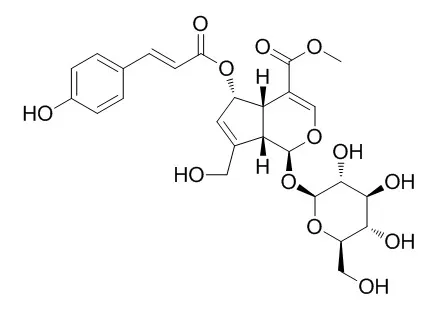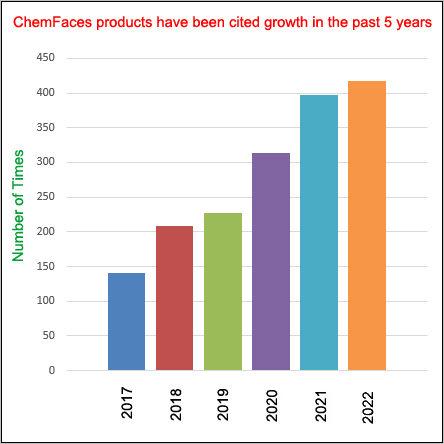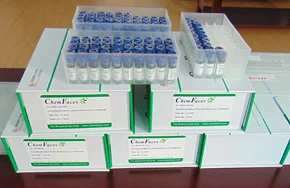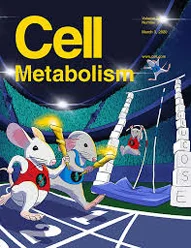(E)-6-O-(p-coumaroyl)scandoside methyl ester

ChemFaces products have been cited in many studies from excellent and top scientific journals
Contact Us
Order & Inquiry & Tech Support
Tel: (0086)-27-84237683
Tech: service@chemfaces.com
Order: manager@chemfaces.com
Address: 176, CheCheng Eest Rd., WETDZ, Wuhan, Hubei 430056, PRC
How to Order
Orders via your E-mail:
1. Product number / Name / CAS No.
2. Delivery address
3. Ordering/billing address
4. Contact information
Order: manager@chemfaces.com
Delivery time
Delivery & Payment method
1. Usually delivery time: Next day delivery by 9:00 a.m. Order now
2. We accept: Wire transfer & Credit card & Paypal
Citing Use of our Products
* Packaging according to customer requirements(5mg, 10mg, 20mg and more). We shipped via FedEx, DHL, UPS, EMS and others courier.
According to end customer requirements, ChemFaces provide solvent format. This solvent format of product intended use: Signaling Inhibitors, Biological activities or Pharmacological activities.
| Size /Price /Stock |
10 mM * 1 mL in DMSO / $157.0 / In-stock |
Other Packaging |
*Packaging according to customer requirements(100uL/well, 200uL/well and more), and Container use Storage Tube With Screw Cap |
More articles cited ChemFaces products.
- J Med Chem.2023, 66(6):4106-4130.
- Eur Rev Med Pharmacol Sci....2020...
- J Med Food.2016, 19(12):1155-1165
- J Nat Prod.2021, 84(9):2544-2553.
- Int J Mol Sci.2018, 19(9):E2601
- Antioxidants (Basel).2023, 12(1):189.
- J Health Sci Med Res.2023, 31584.
- Inflammation.2020, 43(5):1716-1728.
- British Jou. Med.&Med. Research...2014...
- Tropical J. of Pha. Research...2017...
- Chemistry of Plant Materials....2019...
- Current Topics in Nutraceutical R...2021...
- Mol Plant Pathol....2022...
- China Pharmacy2015, 26(27)
- J of Health Science and Alternati...2019...
- Environ Toxicol.2024, tox.24246
- Plants (Basel).2021, 10(5):951.
- Research on Crops.2017, 18(3):569
- Int. J. of Food Properties...2017...
- Appl. Sci.2020, 10(16),5482.
- Antioxidants (Basel).2023, 13(1):12.
- Int J Mol Sci. 2014, 15(5):8443-57
- Planta Med.2022, 88(9-10):794-804.
- More...
Our products had been exported to the following research institutions and universities, And still growing.
- Universita' Degli Studi Di Cagl... (Italy)
- Kyushu University (Japan)
- Universiti Putra Malaysia(UPM) (Malaysia)
- University of Maryland School o... (USA)
- Monash University (Australia)
- University of Illinois at Chicago (USA)
- S.N.D.T. Women's University (India)
- University of Vigo (Spain)
- University of Minnesota (USA)
- University of Eastern Finland (Finland)
- Griffith University (Australia)
- More...






 Cell. 2018 Jan 11;172(1-2):249-261.e12. doi: 10.1016/j.cell.2017.12.019.IF=36.216(2019)
Cell. 2018 Jan 11;172(1-2):249-261.e12. doi: 10.1016/j.cell.2017.12.019.IF=36.216(2019) Cell Metab. 2020 Mar 3;31(3):534-548.e5. doi: 10.1016/j.cmet.2020.01.002.IF=22.415(2019)
Cell Metab. 2020 Mar 3;31(3):534-548.e5. doi: 10.1016/j.cmet.2020.01.002.IF=22.415(2019) Mol Cell. 2017 Nov 16;68(4):673-685.e6. doi: 10.1016/j.molcel.2017.10.022.IF=14.548(2019)
Mol Cell. 2017 Nov 16;68(4):673-685.e6. doi: 10.1016/j.molcel.2017.10.022.IF=14.548(2019)